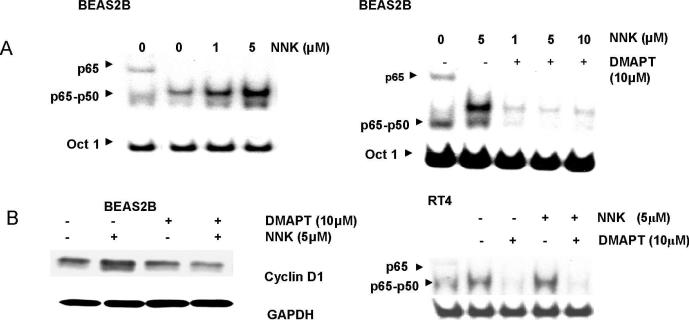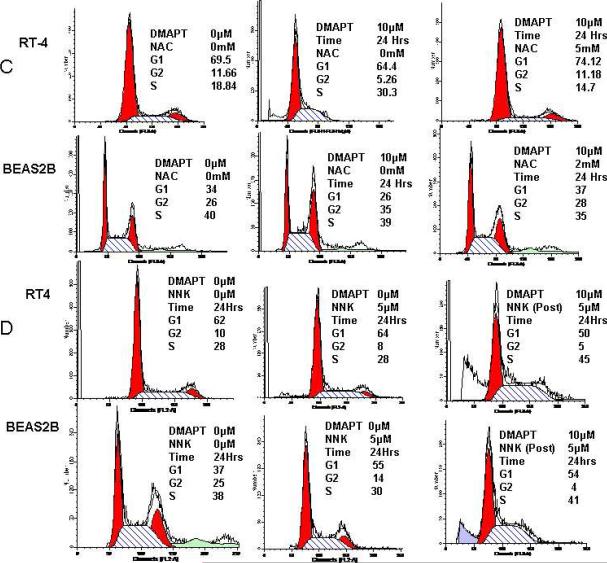Figure 5. DMAPT inhibits NFκB and cancer cell cycle progression despite presence of tobacco associated carcinogen, NNK, in early smoking related cancers.
(A) EMSA detailed NNK increased NFκB DNA binding in a dose dependent manner in BEAS2B (left panel) and that DMAPT was able to block NNK-induced NFκB DNA binding in BEAS2B (right panel). (B) Western blotting detailed NNK increased the levels of cyclin D1 protein and that this was blocked by DMAPT (left panel). EMSA revealed NNK did not increase NFκB DNA binding in RT4 nor did it block the ability of DMAPT to inhibit NFκB DNA binding (right panel). In all EMSA figures the first panel is p65 supershift demonstrating location of p65 in the p65-50 heterodimer in the other lanes. (C) Flow cytometry demonstrated DMAPT induced S phase and G2 phase accumulation in RT4 and BEAS2B, respectively. These changes were present at 12 and 24 hours in both cell lines (data not shown for 12 hour time point) and were blocked by NAC. (D) NNK did not alter cell cycle distribution in RT4 but did increase the number of BEAS2B cells in G1 phase at 24 hours (37% in control versus 55% with NNK treatment). The ability of DMAPT to induce S phase accumulation in RT4 was not abrogated by exposing the cells to NNK after DMAPT (top panel). In BEAS2B, whereas DMAPT alone induced G2 phase accumulation (C, lower panel), DMAPT treatment followed by NNK exposure caused cells to accumulate in G1 and S phases.


